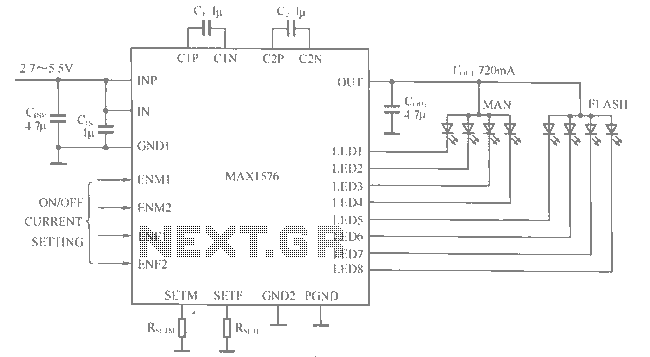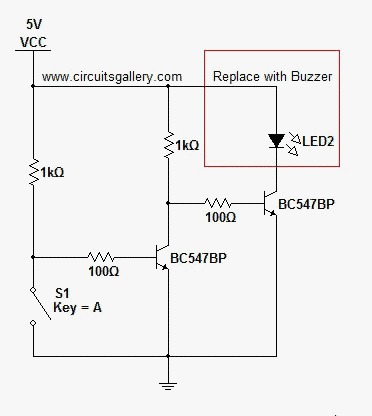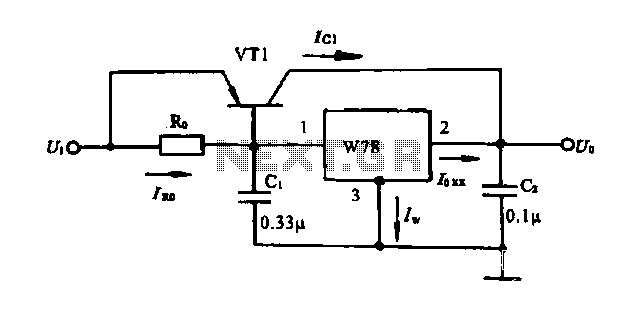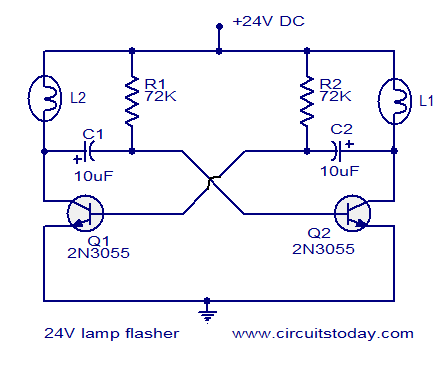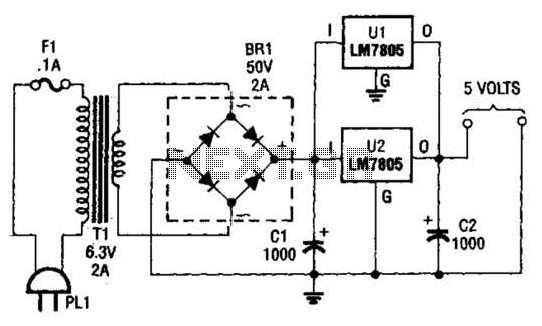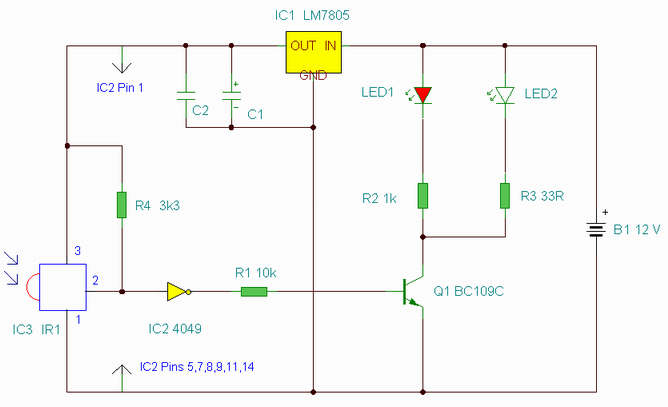
Manual Headlight/Spotlight Control For Autos Circuit
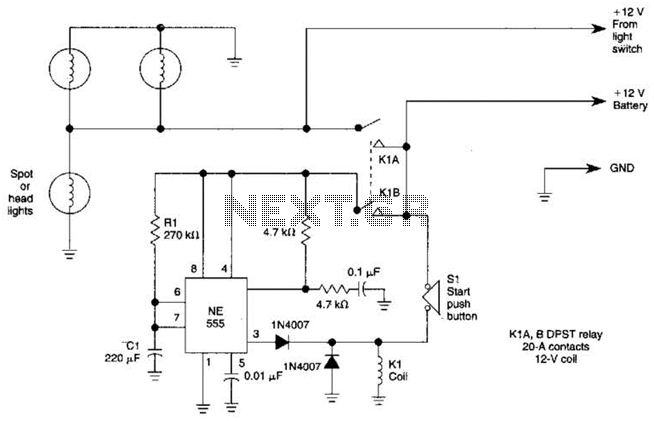
Pressing the START pushbutton activates either the headlights or spotlights for a specified duration. After 1 minute, determined by R1 and C1, the lights will turn off as the NE555 timer completes its cycle.
The circuit utilizes a NE555 timer in monostable mode, which is triggered by the pressing of the START pushbutton. When the button is pressed, the NE555 generates a high output for a time period defined by the resistor R1 and capacitor C1. The time duration can be calculated using the formula T = 1.1 * R1 * C1, where T is the time in seconds. In this case, R1 and C1 are chosen to provide a 1-minute delay.
The output from the NE555 timer is connected to a relay or a transistor switch that controls the power to the headlights or spotlights. The selection of headlights or spotlights can be achieved through additional circuitry, such as a toggle switch that determines which lights are activated when the START button is pressed.
Once the predetermined time elapses, the NE555 timer output goes low, deactivating the relay or transistor and turning off the lights. This feature ensures that the lights do not remain on indefinitely, thereby conserving battery power and preventing potential overheating or damage to the lighting elements.
For optimal performance, R1 and C1 should be selected based on the desired timing and the characteristics of the lights being controlled. It is also advisable to include a diode across the relay coil to prevent back EMF from damaging the NE555 timer when the relay is turned off. Additionally, proper power supply decoupling capacitors should be placed near the NE555 to ensure stable operation.
This circuit is suitable for automotive applications where temporary lighting is required, providing convenience and safety for users. Pressing the START pushbutton turns on either the headlights or spotlights for a predetermined time. After 1 minute (Rl and CI determine this), the lights will shut off as the NE555 completes its cycle.
The circuit utilizes a NE555 timer in monostable mode, which is triggered by the pressing of the START pushbutton. When the button is pressed, the NE555 generates a high output for a time period defined by the resistor R1 and capacitor C1. The time duration can be calculated using the formula T = 1.1 * R1 * C1, where T is the time in seconds. In this case, R1 and C1 are chosen to provide a 1-minute delay.
The output from the NE555 timer is connected to a relay or a transistor switch that controls the power to the headlights or spotlights. The selection of headlights or spotlights can be achieved through additional circuitry, such as a toggle switch that determines which lights are activated when the START button is pressed.
Once the predetermined time elapses, the NE555 timer output goes low, deactivating the relay or transistor and turning off the lights. This feature ensures that the lights do not remain on indefinitely, thereby conserving battery power and preventing potential overheating or damage to the lighting elements.
For optimal performance, R1 and C1 should be selected based on the desired timing and the characteristics of the lights being controlled. It is also advisable to include a diode across the relay coil to prevent back EMF from damaging the NE555 timer when the relay is turned off. Additionally, proper power supply decoupling capacitors should be placed near the NE555 to ensure stable operation.
This circuit is suitable for automotive applications where temporary lighting is required, providing convenience and safety for users. Pressing the START pushbutton turns on either the headlights or spotlights for a predetermined time. After 1 minute (Rl and CI determine this), the lights will shut off as the NE555 completes its cycle.
